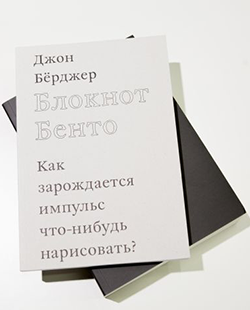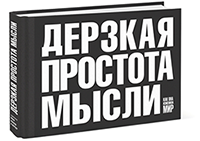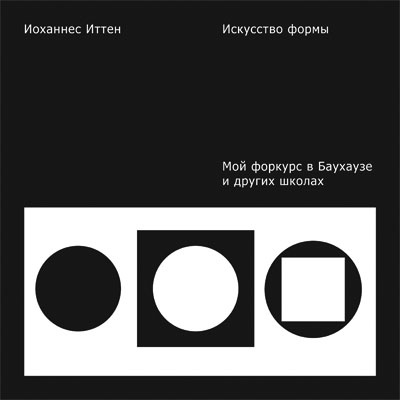John Burger “Bento’s Notebook”
John Burger “Bento’s Notebook”
 John Burger – English writer, art critic, artist. He is known for his sociological works analyzing the development of media in modern times.
John Burger – English writer, art critic, artist. He is known for his sociological works analyzing the development of media in modern times.
What is this book about
“Bento Notebook”, as the name implies, is a creative symbiosis of the author from several topics close to his heart, namely, the presentation of the metaphysical essence of the creative process and the citation of his favorite philosophers. Any of us who have ever painted, during this process, asked various questions about what it is that we do – whether it is mindless copying of the environment or the process of in-depth knowledge of the world, in which we see not only the features of the form objects, but also some of their natural essence.
Who is this book for
Apparently, Bento’s Notebook is a book for mystics and romantic seekers for whom drawing or any creative process is not just “work”. For them, she will have value as an interlocutor in a topic that usually there is no one to talk to, because any educational or work process associated with drawing usually involves dry practice. The question of determining which facets of knowledge this occupation reveals for a person remains undisclosed, this is approximately the same as oriental martial arts, taught without an introduction to eastern philosophy, or at least to philosophy associated with a specific type of these martial arts.
To the same extent, this book is useful to those who know nothing at all about drawing, and the figurative data from the pages of atlases of academic drawing does not give him any hope of revealing his own potential. The book was written by a man who himself, apparently, not so long ago took up the tools, but, unlike many, managed to convey the feeling of passion and meaning that he possessed, thus answering the question “Why do I draw” to many beginners …
Bento notebook
The subject that the author takes as a basis and around which he builds his narrative is the never-found thing, the notebook of Benedict de Spinoza. The technique he uses when imagining himself the owner of a notebook and filling it in is one of those that, to one degree or another, are used by many contemporary artists in the process of training or practice. Of course, in order to comprehend the personality of the object of imitation, one must be completely carried away by him. To understand this method, imagine someone of your favorite authors (writers, philosophers, or artists) whose images you understand and are well aware of, and try to think as they would. What would they draw if they had a notebook? How could they express themselves in activities that are opposite to their main activity? Approximately the interest that has you now, obviously, owned by the author at the time of writing.
The work is to a very large extent artistic than practical. There are many completely subjective images and descriptions of things that delighted the author. His attempts to figure out strangers, imagining what they have in the bag, for whom these things are, what is the essence of the peculiarities of clothes that are slovenly or pedantically neatly laid on someone’s clothes. As is often the case, different people like or dislike a work of art precisely because of the kind of subjective experience that the author experiences – whether he is adequate to the reader at a given period of his life or not.
Text style
The book is written in simple language, the author often inserts somewhat infantile remarks about certain objects and events that can occur to a person only with the closest focus on them. This is inherent, in principle, to many authors who, in one way or another, expound the figurative essence of their everyday life, but here, however, it has a somewhat more practical character – nevertheless, the author has the goal of conveying this figurative knowledge precisely about the very process of their accumulation and expression later in figure.
One of these remarks sounds something like this: walking through the halls of an exhibition of paintings, the author stumbles upon one that depicts a scene with horses and a stable.
“Then I tried to imagine myself choosing and buying a horse. Better to be the master of the horse than the paintings. I also imagined myself stealing a horse. Owning a stolen horse is probably even more difficult than cheating on your wife? Trivial questions, the answer to which we will never know. “
In general, it is a book about the adventures of an artist who analyzes the world and events around him, often from the point of view of plasticity and a certain “spirit” of form.
You can buy the book in the Ozon.ru store in printed form or in electronic form.
…


